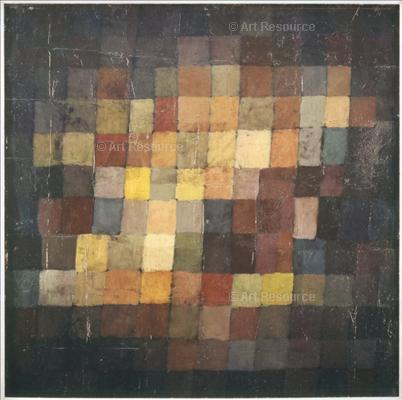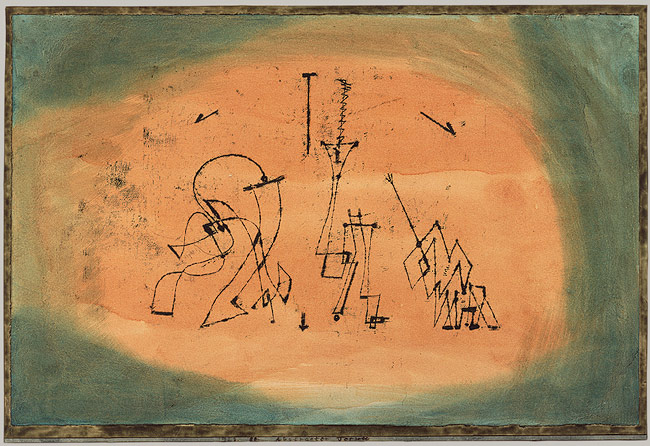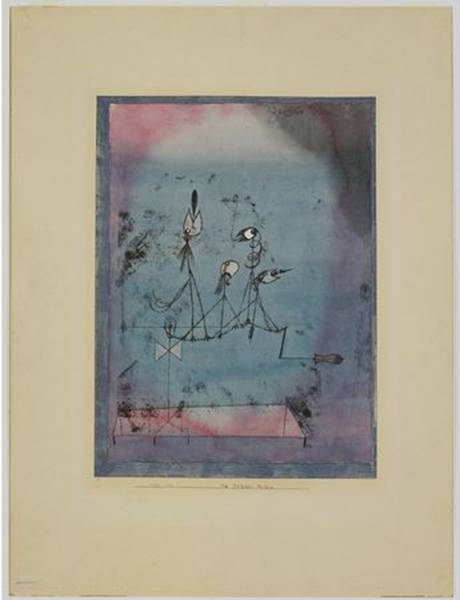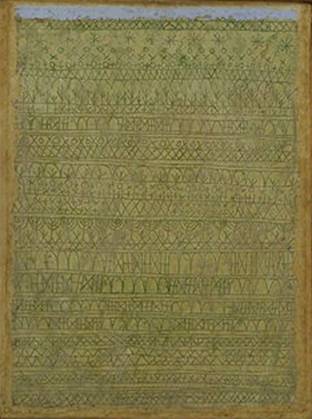Gunther Schuller (1925-2015)
Born November 22, 1925 in New York
Died June 21, 2015, Boston, MA
Seven Studies on Themes of Paul Klee
Composed 1959
First Performance: November 27, 1959. Minneapolis Symphony Orchestra conducted by Antal Dorati.
Instrumentation: 3 flutes (+piccolo), 2 oboes, english horn, 2 clarinets, bass clarinet, 2 bassoons, contrabassoon, 4 horns, 3 trumpets, 3 trombones, piano, harp, vibraphone, glockenspiel, percussion, strings
Schuller’s grandfather was a conductor in Germany and his father was a violinist in NY Philharmonic for 42 years. After playing horn with the Ballet Theater under Antal Dorati he became Principal Horn with the Cincinnati Symphony from 1943 and later with the Metropolitan Opera Orchestra from 1945-1959. He had an early interest in Jazz and was a performer on the Miles Davis recording “Birth of the Cool” and has written several books on Jazz. He has composed pieces that combine elements of Jazz and classical music. At a Brandeis University lecture in 1957 he coined the term Third Stream described as ” a new genre of music located about halfway between jazz and classical music.”
Schuller won the Pulitzer Prize in 1994 for his orchestral work Of Reminiscences and Reflections. He taught at Yale and the New England Conservatory of Music. For twenty years he was affiliated with the Tanglewood music center.
Swiss artist Paul Klee (December 18, 1879 – June 29, 1940) was also a violinist (and the son of a musicologist) who frequently used musical ideas and forms in his paintings.
Schuller was commissioned by the Minneapolis Symphony Orchestra and the Ford Foundation in conjunction with the American Music Center for a new orchestral work. He had long had an interest in Klee’s work and saw this as an opportunity to use translate back into music Klee’s original musical ideas. Schuller has written about Klee, “There is perhaps no other artist whose work bears such a close relationship to music.” He adds that “each of the seven pieces bears a slightly different relationship to the original Klee painting from which it stems. Some relate to the actual design, shape or color of the painting, while others take the general mood of the picture or its title as a point of departure.”
The seven Klee pieces use such imaginative titles as Antique Harmonies, Abstract Trio, Little Blue Devil, Twittering Machine, Arab Village, An Eerie Moment and Pastorale.
Schuller employs a wide variety of techniques to convey his (re)interpretation of Klee’s paintings. The Antique Harmonies is a series of overlapping blocks ranging in color from black to brown to bright yellow. In Schuller’s music, the blocks are overlapping intervals of a fifth and the shifting colors are represented by a shift in timbres, from the dark lower
strings to the brightness of the trumpets with the violins. The Abstract Trio presents a succession of four different trios which combine at the end. We hear the third stream flowing
in the Little Blue Devil when we hear a walking bass emerge while the trumpets begin to
play a “blue” tune. The Twittering Machine does just that by using the serial techniques that were much in vogue in the fifties. Arab Village evokes a sun drenched village where a flute and oboe take turns playing authentic Tunisian scales. An Eerie Moment is full of eerie portent which finally erupts. As you can see in the printed companion for this concert, the Pastorale appears to be a series of geometric patterns that continue across the page much like the flow of text on a printed page. We hear these lines as a varying accompaniment to the horn and clarinet’s melody.
Paintings
Resources
[amazon template=iframe image&asin=B000A5DLPG]




